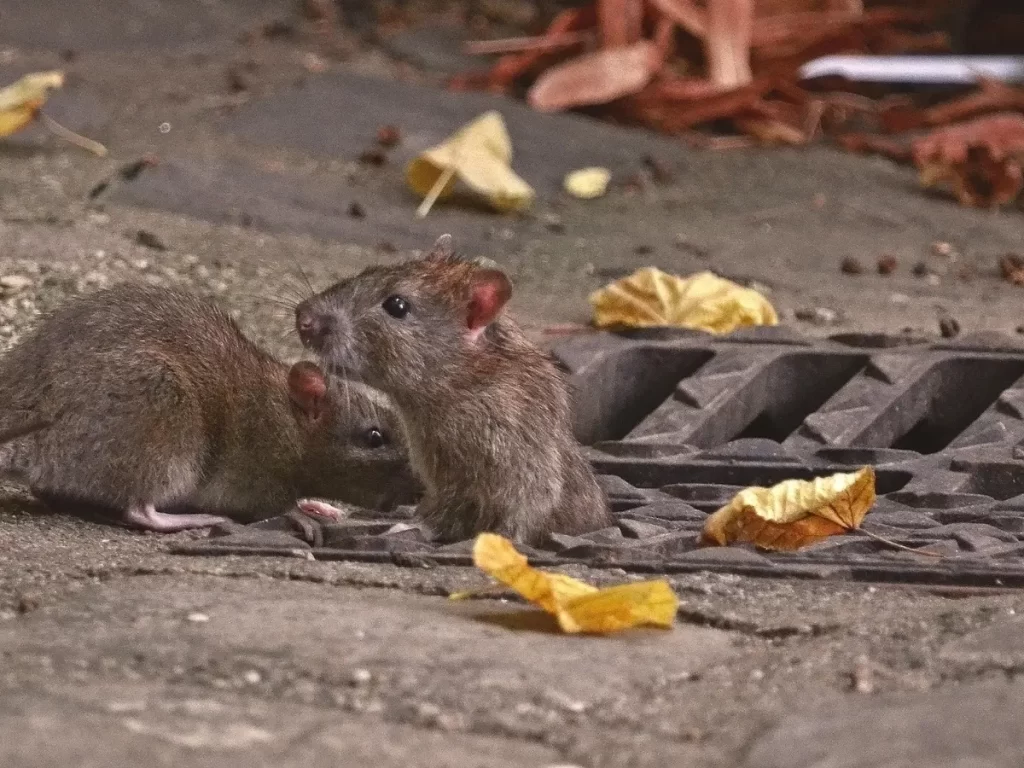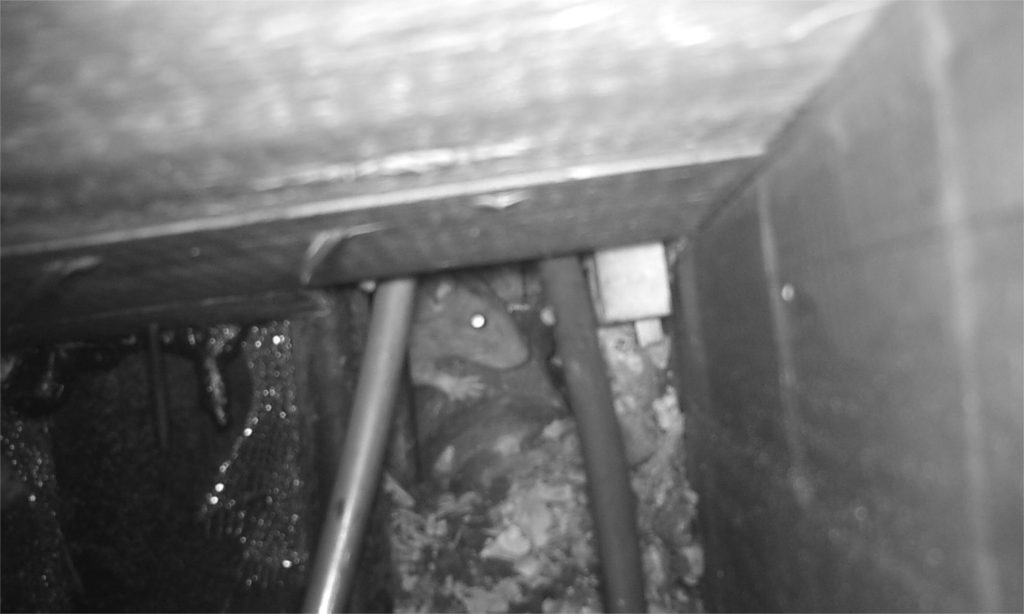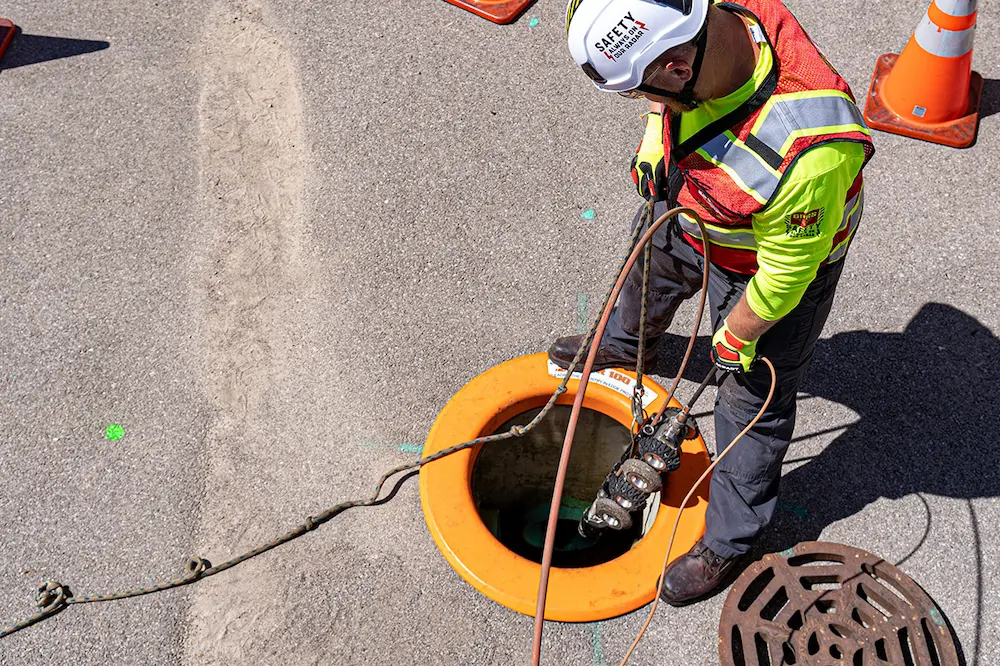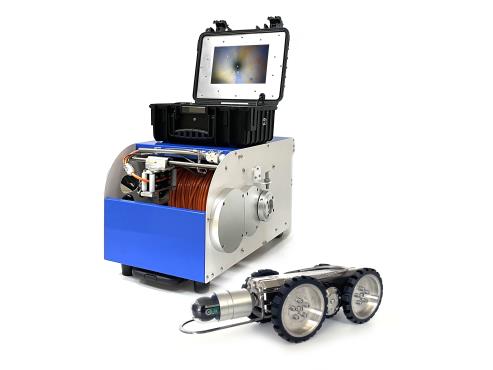Sewer rats are more than just a nuisance; they can cause significant damage to your sewer system. Understanding how these pests impact your pipes and knowing how to detect their presence early can save you from costly repairs and health hazards. In this comprehensive guide, we’ll explore the ways sewer rats damage pipes and highlight the importance of using inspection cameras to identify issues and detect leaks before they escalate.
What Sewer Rats Are
Sewer rats live in the dark, hidden recesses of the sewer system. While they may go unnoticed by most, their presence can lead to substantial problems for homeowners and municipal systems alike.
Rats are remarkably adaptable creatures that thrive in urban environments, particularly within sewer systems. These rodents are known for their ability to chew through various materials, including pipes. Their nesting and burrowing behaviors can weaken the structural integrity of your sewer lines. Understanding the behavior and biology of sewer rats can provide insights into how they cause damage and what signs to look for. Environmental factors like moisture and temperature can influence the nesting and burrowing behaviors of sewer rats.
How Sewer Rats Damage Sewer Pipes
Sewer rats are not just a surface-level issue; their presence in your sewer system can lead to structural damage and costly repairs. Here’s how they do it.
- Chewing and Gnawing: Rats have powerful teeth that continuously grow, leading them to chew on hard materials to keep them trimmed. Unfortunately, this often includes sewer pipes made of PVC, cast iron, and even concrete. Their gnawing can create holes and cracks in the pipes, leading to leaks and eventual pipe failure.
- Blockages from Nesting: Rats build nests in the sewer system using debris and waste materials. These nests can obstruct the flow of sewage, causing blockages that lead to backups and overflows. This not only disrupts the sewer system but also creates unsanitary conditions.
- Structural Damage: Over time, the constant burrowing and nesting activities of sewer rats can undermine the soil around the pipes, leading to shifts and cracks. This can cause misalignment of the pipes, leading to leaks and more severe structural issues.
- Health Hazards: Beyond physical damage, the presence of rats in your sewer system poses significant health risks. They can carry diseases such as leptospirosis, hantavirus, and salmonella, which can contaminate your water supply and living environment.
Regular pipe inspections are crucial for identifying damage early and preventing costly repairs. Utilizing advanced solutions like lateral launch cameras allows for comprehensive inspection of complex or deep piping systems. These cameras can navigate branching lines and provide a live video feed, ensuring thorough examination and maintenance of the plumbing system.

Signs There Are Rats in the Sewer
Early detection of sewer rat activity is crucial in preventing extensive damage and maintaining the integrity of your sewer system. Here are the signs to watch for and why prompt action is essential.
- Slow Draining Fixtures: If your sinks, bathtubs, or toilets are draining slower than usual, it might be due to a blockage caused by rat nests or debris. Slow drains are often an early warning sign of a sewer line problem. Blockages caused by rats can lead to more serious plumbing issues if not addressed quickly.
- Unusual Noises: Hearing scratching, scurrying, or gnawing sounds coming from your walls or floors can indicate the presence of rats in the sewer system. These noises are particularly noticeable at night when rats are most active. If you suspect rodents in the sewer pipes, it’s important to investigate further.
- Foul Odors: A persistent, unpleasant smell coming from your drains or around your property could be a sign of a sewer rat infestation. The odor results from waste accumulation and can indicate a breach or blockage in the sewer line. Sewer odors are a common indicator that something is wrong with the underground pipes.
- Increased Pest Activity: Seeing an increase in rat sightings around your property, especially near sewer access points, is a strong indication of an infestation. Rats often travel above ground to find food and return to the sewers to nest.
- Visible Damage: Inspecting your property for signs of gnawing on exposed pipes, foundations, or other materials can help identify a rat problem early. Physical damage around sewer entry points should be investigated promptly.
Why Use Inspection Cameras for Early Detection
One of the most effective ways to detect sewer rat activity early and prevent damage is through the use of sewer pipeline inspection cameras. These advanced tools provide a clear view of your sewer system’s interior, allowing for precise identification of issues.
- Real-Time Visuals: Inspection cameras provide real-time footage of the inside of your sewer pipes. This allows for immediate identification of any signs of rat activity, such as nests, chew marks, or blockages.
- Non-Invasive Inspection: Unlike traditional methods that may require digging or dismantling parts of your sewer system, inspection cameras can navigate through pipes with minimal disruption. This makes it easier to conduct regular inspections without causing damage to your property.
- Accurate Diagnosis: With high-resolution imagery, inspection cameras can capture detailed views of the pipe's condition. This accuracy helps in diagnosing the exact nature and location of the problem, whether it’s due to rats or other issues.
- Preventive Maintenance: Regular use of inspection cameras allows for proactive maintenance of your sewer system. By identifying potential problems early, you can address them before they escalate into major issues, saving time and money in the long run.

How to Protect Your Property from Sewer Rats with Regular Sewer Pipeline Inspection
Preventing sewer rat infestations and protecting your sewer system requires a combination of regular inspections and proactive measures. Here’s how you can safeguard your property.
- Regular Sewer Inspections: Schedule routine sewer inspections using advanced camera technology to monitor pipe conditions. Regular checks allow for early detection of potential rat activity or damage, enabling prompt intervention.
- Seal Entry Points: Inspect and seal all potential entry points into your sewer system. Pay special attention to cracks in the foundation, gaps around pipes, and ensure that sewer grates are securely fitted.
- Proper Waste Management: Since rats are attracted to food waste, implement effective waste management practices. Use secure trash bins and dispose of waste regularly to minimize attractants around your property.
- Rodent Control Measures: Collaborate with pest control professionals to establish rodent control strategies. This can include traps, baits, and other deterrents to manage rat populations effectively.
- Community Awareness and Education: Educate yourself and your neighbors on the signs of sewer rat activity and the importance of maintaining a healthy sewer system. Community awareness can enhance collective efforts to prevent infestations.
Solutions Provided by JIU TAI Technology
When it comes to advanced solutions for sewer line maintenance and inspection, JIU TAI Technology stands at the forefront. Specializing in innovative products designed to enhance the efficiency and accuracy of sewer system management, JIU TAI Technology offers state-of-the-art tools to tackle even the most challenging maintenance tasks. The product lineup includes sewer pipeline inspection robots, push rod borescope cameras and manhole pole cameras, all designed to deliver high-resolution imagery and real-time diagnostics. These cameras are equipped with advanced features such as 360-degree rotation, powerful LED lighting, and robust construction to withstand the harsh environments of sewer systems.
The inspection cameras from JIU TAI Technology allow for precise identification of issues like blockages, structural damage, and pest infestations, including sewer rats. By offering unparalleled clarity and detail, these tools enable professionals to conduct thorough inspections with minimal disruption, ensuring that problems are addressed swiftly and effectively. With JIU TAI Technology's products, maintaining a healthy and functional sewer system becomes a more manageable and efficient task.
Underground pipe inspection is a crucial aspect of infrastructure maintenance. It involves various traditional and modern methods, including CCTV inspection and robotic crawlers, which enhance the efficiency and accuracy of assessing underground pipes, ultimately preventing issues like leaks and blockages. Visual inspection serves as the initial step in pipeline inspection, where inspectors evaluate the pipeline's external surfaces and accessible internal components for visible defects. This preliminary assessment is essential before moving on to more detailed methods, such as non-destructive testing (NDT), to ensure a comprehensive evaluation of the pipeline's condition.

Conclusion
Sewer rats pose a significant threat to the integrity of your sewer system and the health of your household. Understanding how they cause damage and knowing how to detect their presence early is crucial in maintaining a functional and safe sewer system.
By utilizing advanced inspection cameras, such as that offered by JIU TAI, you can effectively monitor your sewer lines for signs of rat activity and other potential issues. Regular inspections, combined with proactive preventive measures, can save you from costly repairs and health hazards. Stay vigilant, keep your sewer system in check, and protect your property from the hidden dangers of sewer rats.






